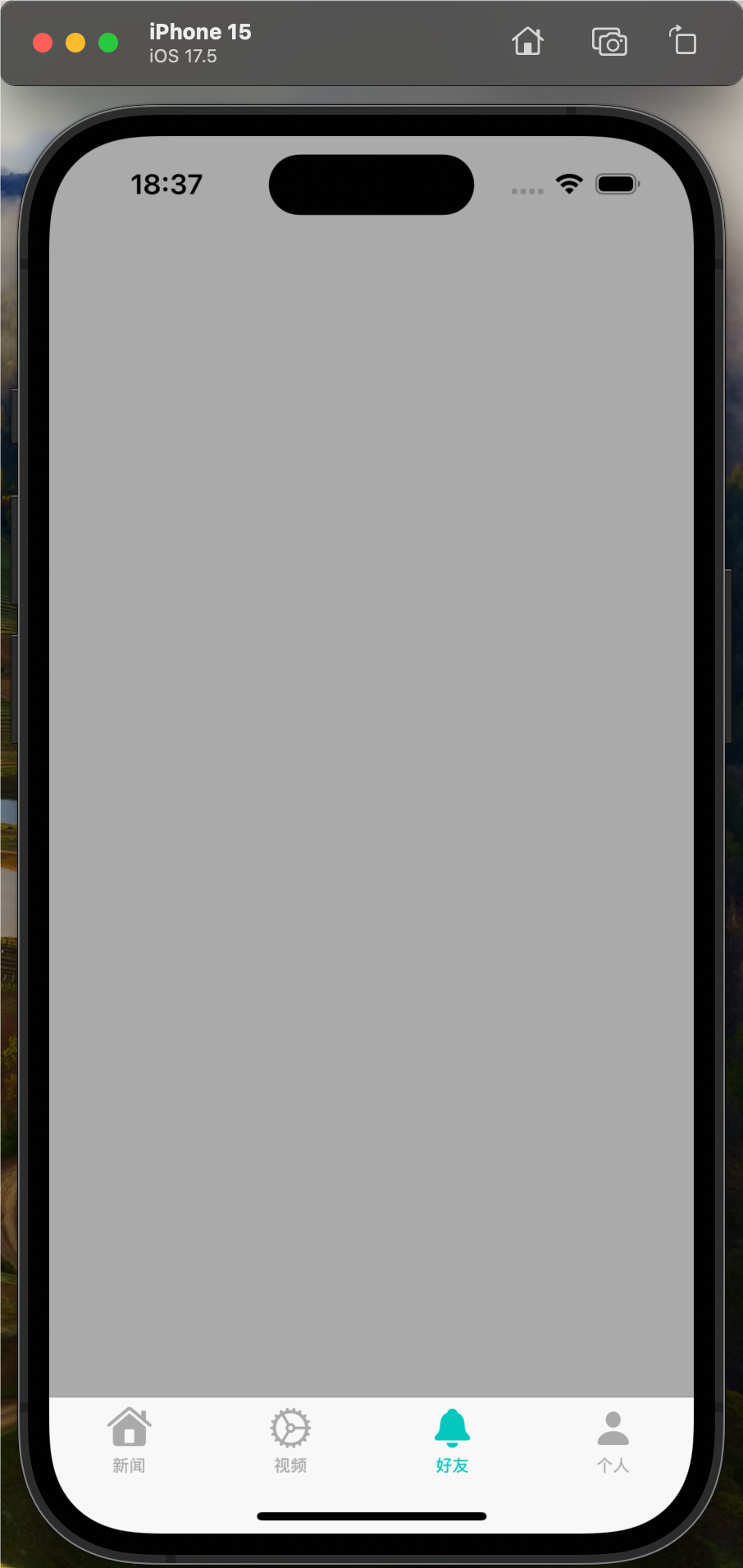NavigationController由一个按钮调用,因此在呈现时没有交互式转换.它可以通过按钮或UIPanGestureRecognizer来解除,因此它可以被交互或不被解雇.
我有一个名为TransitionManager的对象,用于转换,UIPercentDrivenInteractiveTransition的子类.
下面的代码的问题是从不调用两个委托方法interactionControllerFor ….
此外,当我按下按钮或swip(UIPanGestureRecognizer)时,模态segue的基本动画就完成了.所以两个委托方法animationControllerFor …也不起作用.
有任何想法吗 ?谢谢
ViewController.swift
let transitionManager = TransitionManager()
override func viewDidLoad() {
super.viewDidLoad()
self.transitioningDelegate = transitionManager
}
override func prepareForSegue(segue: UIStoryboardSegue,sender: AnyObject?) {
let dest = segue.destinationViewController as UIViewController
dest.transitioningDelegate = transitionManager
dest.modalPresentationStyle = .Custom
}
TransitionManager.swift
class TransitionPushManager: UIPercentDrivenInteractiveTransition,UINavigationControllerDelegate,UIViewControllerTransitioningDelegate { @IBOutlet var navigationController: UINavigationController! var animation : Animator! // Implement UIViewControllerAnimatedTransitioning protocol override func awakeFromNib() { var panGesture = UIPanGestureRecognizer(target: self,action: "gestureHandler:") navigationController.view.addGestureRecognizer(panGesture) animation = Animator() } func gestureHandler(pan : UIPanGestureRecognizer) { switch pan.state { case .Began : interactive = true navigationController.presentingViewController?.dismissViewControllerAnimated(true,completion:nil) case .Changed : ... default : ... interactive = false } } func animationControllerForPresentedController(presented: UIViewController,presentingController presenting: UIViewController,sourceController source: UIViewController) -> UIViewControllerAnimatedTransitioning? { return animation } func animationControllerFordismissedController(dismissed: UIViewController) -> UIViewControllerAnimatedTransitioning? { return animation } func interactionControllerForPresentation(animator: UIViewControllerAnimatedTransitioning) -> UIViewControllerInteractiveTransitioning? { return nil } func interactionControllerFordismissal(animator: UIViewControllerAnimatedTransitioning) -> UIViewControllerInteractiveTransitioning? { return self.interactive ? self : nil }
Main.storyboard
> ViewController上的按钮触发了一个模态segue来呈现NavigationController
> NavigationController的委托出口链接到TransitionManager类的对象
> NavigationController在TransitionManager类中由属性“navigationController”引用
解决方法
让我们想象你的根场景(“Root”)呈现导航控制器场景(“Nav”),然后从场景A推送到B到C,例如,我想象一个这样的对象模型,导航控制器只会拥有自己的动画控制器,交互控制器和手势识别器:
这是您在考虑(a)“root”呈现“nav”时的自定义转换(非交互式)时所需要的; (b)当“nav”自行解散以返回“根”时的自定义转换(交互与否).所以,我将导航控制器子类化为:
>在其视图中添加手势识别器;
>设置transitioningDelegate以在从根场景转换到导航控制器场景(并返回)时生成自定义动画:
> transitioningDelegate还将返回交互控制器(仅在手势识别器正在进行时才存在),如果您在手势的上下文之外解除,则在手势和非交互式转换期间产生交互式转换.
在Swift 3中,它看起来像:
import UIKit
import UIKit.UIGestureRecognizerSubclass
class CustomNavigationController: UINavigationController {
public required init?(coder aDecoder: NSCoder) {
super.init(coder: aDecoder)
configure()
}
override init(rootViewController: UIViewController) {
super.init(rootViewController: rootViewController)
configure()
}
private func configure() {
transitioningDelegate = self // for presenting the original navigation controller
}
override func viewDidLoad() {
super.viewDidLoad()
delegate = self // for navigation controller custom transitions
let left = UIScreenEdgePanGestureRecognizer(target: self,action: #selector(handleSwipeFromLeft(_:)))
left.edges = .left
view.addGestureRecognizer(left)
}
fileprivate var interactionController: UIPercentDrivenInteractiveTransition?
func handleSwipeFromLeft(_ gesture: UIScreenEdgePanGestureRecognizer) {
let percent = gesture.translation(in: gesture.view!).x / gesture.view!.bounds.size.width
if gesture.state == .began {
interactionController = UIPercentDrivenInteractiveTransition()
if viewControllers.count > 1 {
popViewController(animated: true)
} else {
dismiss(animated: true)
}
} else if gesture.state == .changed {
interactionController?.update(percent)
} else if gesture.state == .ended {
if percent > 0.5 && gesture.state != .cancelled {
interactionController?.finish()
} else {
interactionController?.cancel()
}
interactionController = nil
}
}
}
// MARK: - UINavigationControllerDelegate
//
// Use this for custom transitions as you push/pop between the varIoUs child view controllers
// of the navigation controller. If you don't need a custom animation there,you can comment this
// out.
extension CustomNavigationController: UINavigationControllerDelegate {
func navigationController(_ navigationController: UINavigationController,animationControllerFor operation: UINavigationControllerOperation,from fromVC: UIViewController,to toVC: UIViewController) -> UIViewControllerAnimatedTransitioning? {
if operation == .push {
return ForwardAnimator()
} else if operation == .pop {
return BackAnimator()
}
return nil
}
func navigationController(_ navigationController: UINavigationController,interactionControllerFor animationController: UIViewControllerAnimatedTransitioning) -> UIViewControllerInteractiveTransitioning? {
return interactionController
}
}
// MARK: - UIViewControllerTransitioningDelegate
//
// This is needed for the animation when we initially present the navigation controller.
// If you're only looking for custom animations as you push/pop between the child view
// controllers of the navigation controller,this is not needed. This is only for the
// custom transition of the initial `present` and `dismiss` of the navigation controller
// itself.
extension CustomNavigationController: UIViewControllerTransitioningDelegate {
func animationController(forPresented presented: UIViewController,presenting: UIViewController,source: UIViewController) -> UIViewControllerAnimatedTransitioning? {
return ForwardAnimator()
}
func animationController(fordismissed dismissed: UIViewController) -> UIViewControllerAnimatedTransitioning? {
return BackAnimator()
}
func interactionControllerForPresentation(using animator: UIViewControllerAnimatedTransitioning) -> UIViewControllerInteractiveTransitioning? {
return interactionController
}
func interactionControllerFordismissal(using animator: UIViewControllerAnimatedTransitioning) -> UIViewControllerInteractiveTransitioning? {
return interactionController
}
func presentationController(forPresented presented: UIViewController,presenting: UIViewController?,source: UIViewController) -> UIPresentationController? {
return PresentationController(presentedViewController: presented,presenting: presenting)
}
}
// When doing custom `present`/`dismiss` that overlays the entire
// screen,you generally want to remove the presenting view controller's
// view from the view hierarchy. This presentation controller
// subclass accomplishes that for us.
class PresentationController: UIPresentationController {
override var shouldRemovePresentersView: Bool { return true }
}
// You can do whatever you want in the animation; I'm just fading
class ForwardAnimator : NSObject,UIViewControllerAnimatedTransitioning {
func transitionDuration(using transitionContext: UIViewControllerContextTransitioning?) -> TimeInterval {
return 0.5
}
func animateTransition(using context: UIViewControllerContextTransitioning) {
let toView = context.viewController(forKey: .to)!.view!
context.containerView.addSubview(toView)
toView.alpha = 0.0
UIView.animate(withDuration: transitionDuration(using: context),animations: {
toView.alpha = 1.0
},completion: { finished in
context.completeTransition(!context.transitionWasCancelled)
})
}
}
class BackAnimator : NSObject,UIViewControllerAnimatedTransitioning {
func transitionDuration(using transitionContext: UIViewControllerContextTransitioning?) -> TimeInterval {
return 0.5
}
func animateTransition(using context: UIViewControllerContextTransitioning) {
let toView = context.viewController(forKey: .to)!.view!
let fromView = context.viewController(forKey: .from)!.view!
context.containerView.insertSubview(toView,belowSubview: fromView)
UIView.animate(withDuration: transitionDuration(using: context),animations: {
fromView.alpha = 0.0
},completion: { finished in
context.completeTransition(!context.transitionWasCancelled)
})
}
}
因此,我可以将故事板中我的导航控制器的基类更改为此自定义子类,现在根场景可以只显示导航控制器(没有特殊的准备(对于:))并且一切正常.

